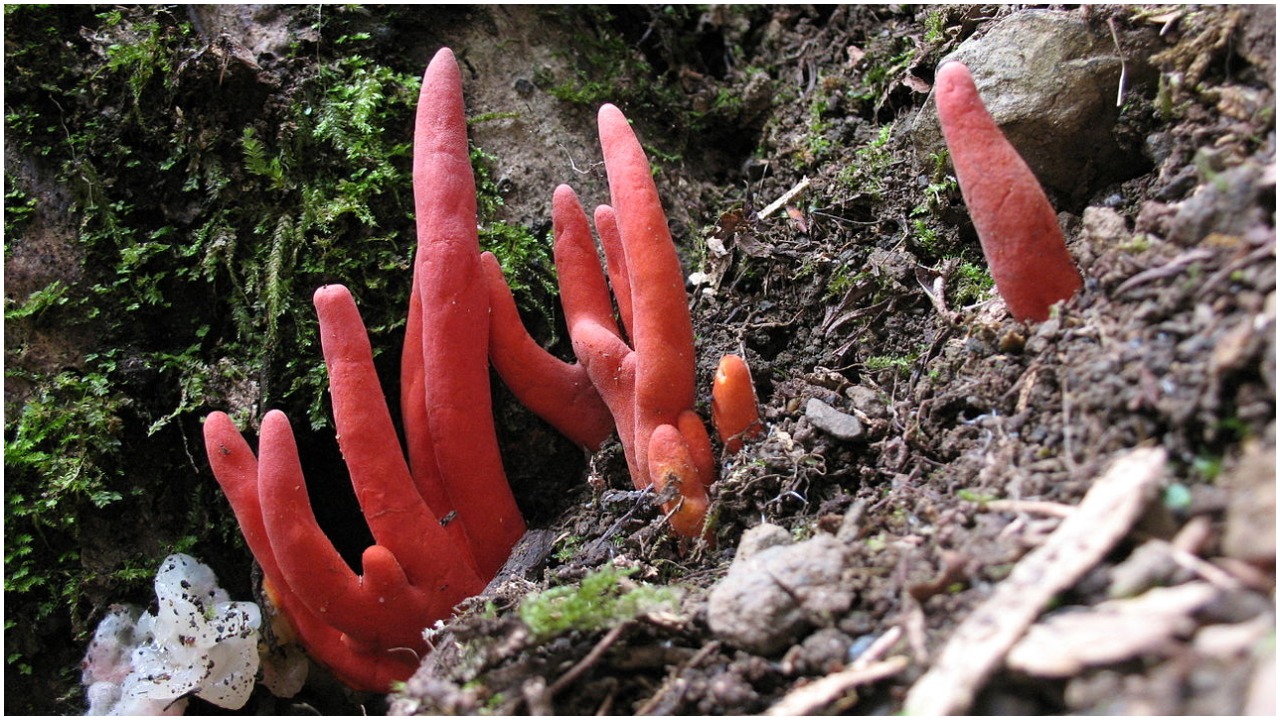Deadly Brain-Shrinking Fungus Has Mysteriously Appeared in Australia

All over the world, there are certain species of fungus, plants or animals that are unique to that region. Some are beneficial, like corn or tomatoes, and end up spreading across continents as the result of trade.
Others are less beneficial. Sometimes a species of plant or animal can be highly invasive when it’s relocated to a new area which leaves it without its natural checks and balances (like Kudzu or Asian carp).
Sometimes, one of those indigenous species can mysteriously appear in an area far-removed from its native soil for no apparent reason, whatsoever.
Consider the poison fire coral.
Poison fire coral isn’t actually a coral. It’s a fungus with a bright red color, which grows in clumps of vaguely coral-like shapes on the ground or in the bark of certain trees.
One of the deadliest fungi in the world has been found in Australia for the first time after a photographer discovered the species in a Queensland rainforest. Poison Fire Coral is usually found in Japan and Korea where several deaths have been recorded. #7NEWS pic.twitter.com/inDmISOl1O
— 7NEWS Sydney (@7NewsSydney) October 3, 2019
It has always been considered native to parts of Asia, especially Korea and Japan. Recently, however, it’s been identified as growing in Australia, which is a tremendous expansion of what had previously been considered its natural habitat, according to the BBC.
There are more than 100 known varieties of poisonous mushroom, according to experts, but this is the only variety discovered so far whose toxins can be absorbed through the skin.
Poison fire coral is one of the most toxic fungi known to man. Simply touching it can lead to skin inflammation and dermatitis.
Ingesting even a small amount can cause vomiting, diarrhoea, fever, numbness, brain damage, organ failure, and other, equally unpleasant symptoms.
There have been cases is Asia where people have brewed tea from fire coral, mistaking it for another, edible fungus that is part of the traditional medicine in the area, and died as a result.
According to a report from the Australian Broadcasting Corporation, the unexpected find was in the far north of Queensland, in the rainforest near Cairns.
Poison fire coral: Deadly Asian fungus detected in Australia https://t.co/fNThgZwCyk
— BBC News (World) (@BBCWorld) October 3, 2019
It was made by Ray Palmer, a self-described ‘fungi fanatic’ and photographer, who has been taking pictures of fungi for years. He apparently recognized the fungus when he saw it, but was doubting the evidence of his own eyes, since he knew that it had been previously unknown in Australia.
He took samples of his find to James Cook University in Cairns, and had his suspicion confirmed.
What might be the most surprising thing about discovering the fire coral, is that mycologists think that its appearance may be entirely natural, and not represent a new arrival to the area’s flora.
It seems most likely that spores from the Asian fungus drifted to Australia on their own, thousands of years ago.
Poison fire coral is a rare species at the best of times, and that part of Australia doesn’t have a rigorous catalogue of indigenous fungi, so it’s quite possible that, quite literally, it’s just never been seen there before.
It has been spotted occasionally in other locations, though, including Indonesia, Thailand, and New Guinea, suggesting that the species has, in fact, spread its reach south.
This find simply shows that it managed to spread itself further than anyone knew.
Dr. Matt Barrett, the person who positively identified the fungus based on information he’d received from Ray Palmer, noted that there aren’t really a lot of mushroom hunters in the tropical regions of Australia.
He also said that finding unusual varieties happens fairly regularly – more than 20 different types of fungus no one knew lived in Australia have been discovered in the last six months.
Even Ray Palmer, the fungi fanatic who made the original discovery, says that it wasn’t the first time he had tripped over a type of fungus that no one believed lived in northern Queensland.
Another Article From Us: Cows Swept Out to Sea by Hurricane Found on an Island After Swimming Miles
That suggests that the Australian continent isn’t as isolated as many have believed, but also that fungi spores can be much sturdier and spread much farther than mycologists previously suspected.
